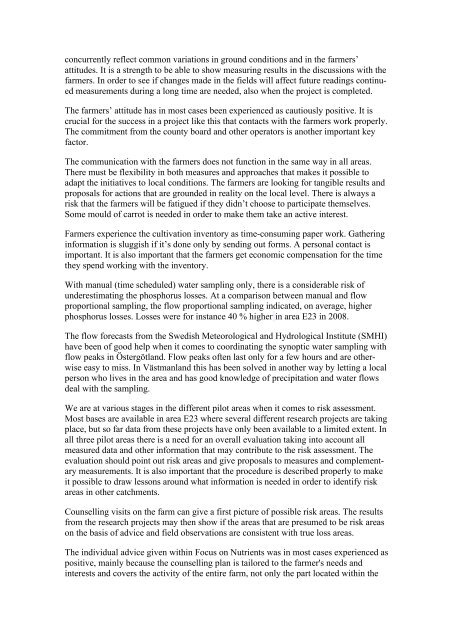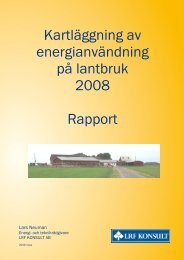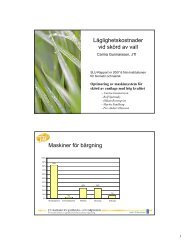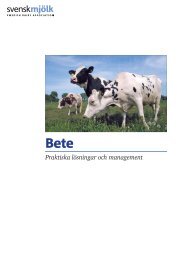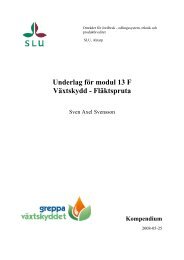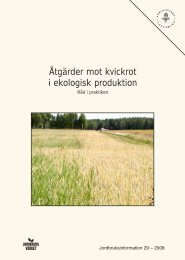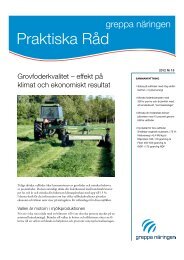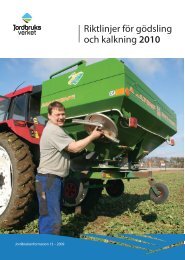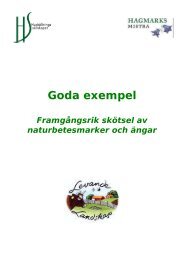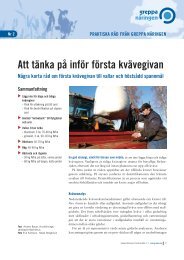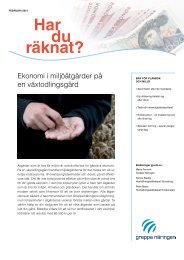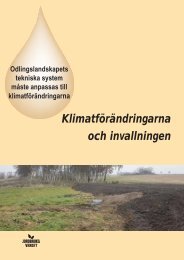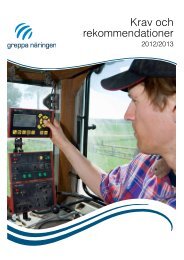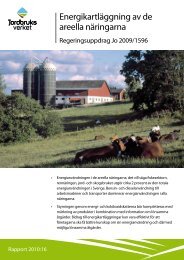à tgärder mot fosforförluster från jordbruksmark - Greppa näringen
à tgärder mot fosforförluster från jordbruksmark - Greppa näringen
à tgärder mot fosforförluster från jordbruksmark - Greppa näringen
Create successful ePaper yourself
Turn your PDF publications into a flip-book with our unique Google optimized e-Paper software.
concurrently reflect common variations in ground conditions and in the farmers’attitudes. It is a strength to be able to show measuring results in the discussions with thefarmers. In order to see if changes made in the fields will affect future readings continuedmeasurements during a long time are needed, also when the project is completed.The farmers’ attitude has in most cases been experienced as cautiously positive. It iscrucial for the success in a project like this that contacts with the farmers work properly.The commitment from the county board and other operators is another important keyfactor.The communication with the farmers does not function in the same way in all areas.There must be flexibility in both measures and approaches that makes it possible toadapt the initiatives to local conditions. The farmers are looking for tangible results andproposals for actions that are grounded in reality on the local level. There is always arisk that the farmers will be fatigued if they didn’t choose to participate themselves.Some mould of carrot is needed in order to make them take an active interest.Farmers experience the cultivation inventory as time-consuming paper work. Gatheringinformation is sluggish if it’s done only by sending out forms. A personal contact isimportant. It is also important that the farmers get economic compensation for the timethey spend working with the inventory.With manual (time scheduled) water sampling only, there is a considerable risk ofunderestimating the phosphorus losses. At a comparison between manual and flowproportional sampling, the flow proportional sampling indicated, on average, higherphosphorus losses. Losses were for instance 40 % higher in area E23 in 2008.The flow forecasts from the Swedish Meteorological and Hydrological Institute (SMHI)have been of good help when it comes to coordinating the synoptic water sampling withflow peaks in Östergötland. Flow peaks often last only for a few hours and are otherwiseeasy to miss. In Västmanland this has been solved in another way by letting a localperson who lives in the area and has good knowledge of precipitation and water flowsdeal with the sampling.We are at various stages in the different pilot areas when it comes to risk assessment.Most bases are available in area E23 where several different research projects are takingplace, but so far data from these projects have only been available to a limited extent. Inall three pilot areas there is a need for an overall evaluation taking into account allmeasured data and other information that may contribute to the risk assessment. Theevaluation should point out risk areas and give proposals to measures and complementarymeasurements. It is also important that the procedure is described properly to makeit possible to draw lessons around what information is needed in order to identify riskareas in other catchments.Counselling visits on the farm can give a first picture of possible risk areas. The resultsfrom the research projects may then show if the areas that are presumed to be risk areason the basis of advice and field observations are consistent with true loss areas.The individual advice given within Focus on Nutrients was in most cases experienced aspositive, mainly because the counselling plan is tailored to the farmer's needs andinterests and covers the activity of the entire farm, not only the part located within the10


